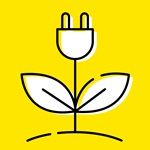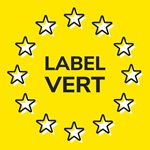
Is nuclear power a green energy?
What is green energy?
 The term "green energy" usually refers to electricity generated from renewable energy sources such as hydroelectricity (dams), or wind, solar, geothermal or biomass energy. Green energy therefore has two major advantages: its low impact on the environment, and the fact that it presents an alternative to the increasingly scarce energy resources that we currently use in vast quantities on a global scale.
The term "green energy" usually refers to electricity generated from renewable energy sources such as hydroelectricity (dams), or wind, solar, geothermal or biomass energy. Green energy therefore has two major advantages: its low impact on the environment, and the fact that it presents an alternative to the increasingly scarce energy resources that we currently use in vast quantities on a global scale.
If we therefore consider the full life cycle of energy generation technologies, it is clear that there is no such thing as clean energy – and that it is, in any case, a relative term.
A green label for energy
 What is the EU green taxonomy?
What is the EU green taxonomy?
On February 2, 2022, the European Commission announced the establishment of a green label for nuclear and gas power plants that recognizes, under certain conditions, their contribution to the fight against climate change. The aim of the green taxonomy proposed by the Commission is clear: in order to meet its ambitious climate targets (zero net emissions of greenhouse gases by 2050), the European Union must divest from fossil fuels and mobilize capital to finance the investments needed to shift to "green" technologies that are environmentally friendly.
A closer look at the taxonomy
The EU green taxonomy is a system for classifying sustainable economic activities, namely those that contribute to mitigating climate change. European investments will therefore be directed towards activities considered to be sustainable, and which contribute to one of the following six objectives:
- Climate change mitigation
- Climate change adaptation
- The sustainable use of water
- The protection of biodiversity
- The transition to a circular economy and waste recycling
- Pollution prevention and control
"To achieve its objective of carbon neutrality by 2050, the EU will have to reduce its greenhouse gas emissions by at least 55% by 2030."
Nuclear power: contributing to the energy transition
Nuclear power received a clear boost during the COP26 in November 2021. Indeed, it could be a real asset in achieving the joint objective shared by the 196 States parties, namely to divest from fossil fuels and reduce greenhouse gas emissions. Nuclear energy is presented as an essential component of the decarbonization strategy of countries around the world. This is because it is a source of low-carbon energy that contributes to the production of low-CO2 electricity. It emits 70 times less CO2 than coal, 40 times less than gas, 4 times less than solar energy, 2 times less than hydroelectricity and the same amount as wind energy.- Joe Biden's infrastructure plan, which was adopted on November 15, 2021, allocates more than 8.47 billion dollars to nuclear power plants already in operation and pilot projects for cutting-edge nuclear technology.
- In China, the government is planning to build 150 new reactors in the next 15 years.
- In France, President Emmanuel Macron recently announced, on February 10, 2022, a program to construct 6 EPR2s, followed by 8 additional plants, as well as to extend the operating life of the current fleet with the approval of the Nuclear Safety Authority.
For Brussels, while renewable energies that have already received the European Commission label remain a priority, they will not by themselves be able to meet rising electricity demand due to their intermittent nature. Hence the need to promote investment
in
stable, controllable sources on a transitional basis.
Thanks to its robust production system, nuclear energy provides continuous electricity that can be adjusted to demand.
The sought-after label will be granted to research and development activities for the construction of new nuclear power plants (with a license granted before 2045), and projects to extend the operating life of plants (approved before 2040). The European Commission will also impose conditions regarding the management of radioactive waste. It is planning to review the technical parameters to be respected by new power plants every 10 years from 2025.
Conclusion
The latest IPCC report and the Glasgow Climate Pact signed at the end of COP26 stressed the vital need to lower our CO2 emissions by 2030. It is therefore urgent to prioritize the types of energy that can contribute to this objective. While no source of energy is 100% green,
nuclear energy and renewables are a winning combination to fight global warming and counteract our dependance on fossil fuels.
- To find out more about how nuclear power helps the climate, visit our hub Faced with the challenge of the fight against global warming, nuclear energy contributes to carbon neutrality with constant, competitive and low-carbon electricity.
- Latest IPCC climate report On August 9, 2021, the IPCC published the 1st part of its 6th Assessment Report, eight years after the previous one. The report is the outcome of studies conducted by Working Group I of the IPCC experts.